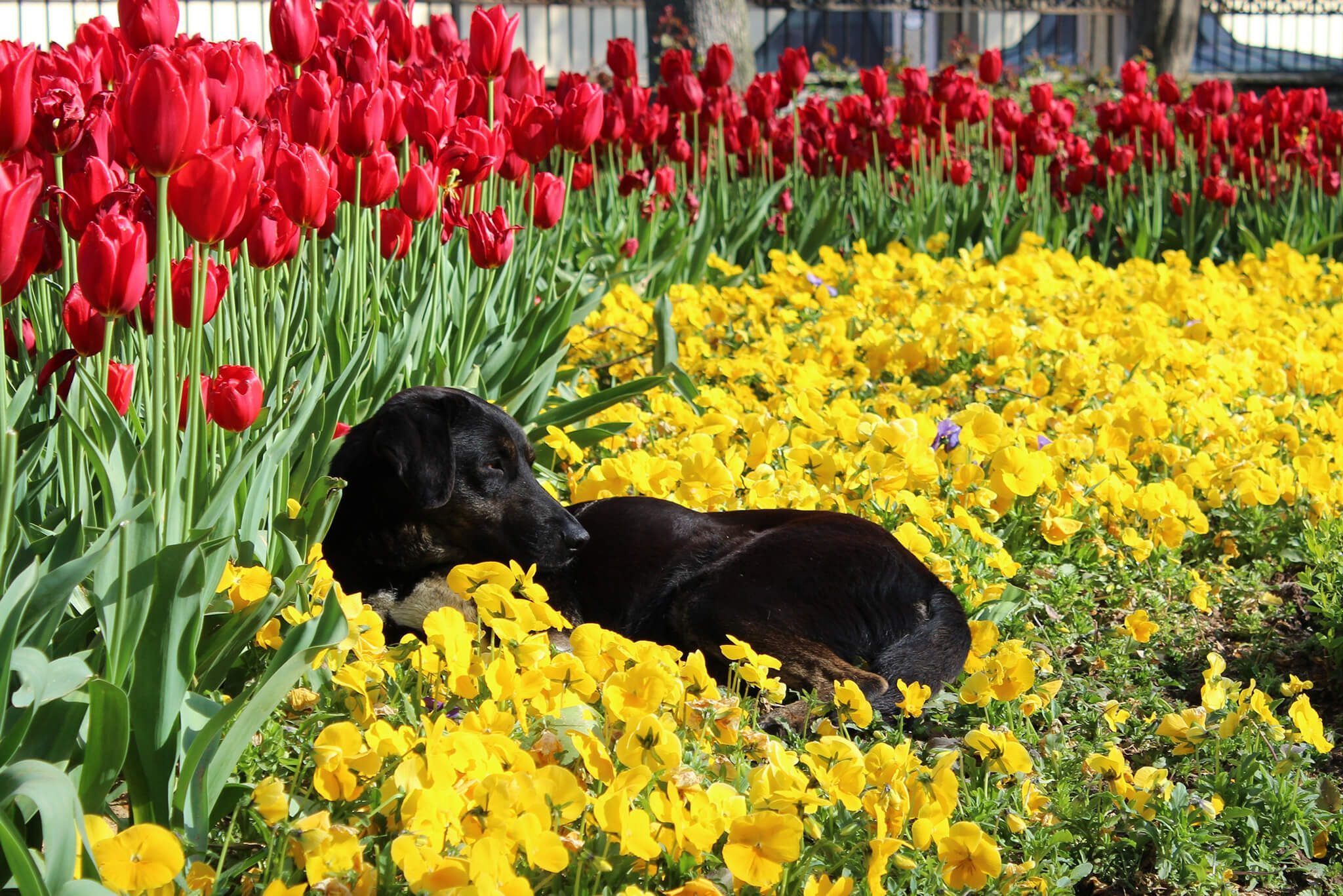Spring is a beautiful time of year, especially in Dallas, TX, where the blooms add a splash of color to our surroundings. However, not all spring flowers are safe for our canine companions. Some plants and flowers can be harmful, or even deadly, to dogs if ingested. We’ll explore 10 common spring flowers that are toxic to dogs. Our goal is to help you, the pet owner, keep your dog safe as you both enjoy the beautiful spring season. If you’re ever in doubt or need more information, please don’t hesitate to reach out to Rutherford Veterinary Hospital in Dallas, TX, at (214) 826-4166. We’re here to assist with any concerns you might have about your dog’s health and safety.

Azaleas
Azaleas are popular spring flowers that add beauty to gardens but they pose a serious risk to dogs. Eating even a few leaves can cause vomiting, diarrhea, and excessive drooling in dogs. In severe cases, it can lead to a drop in blood pressure, coma, and even death. If you suspect your dog has nibbled on azalea, it’s important to contact Rutherford Veterinary Hospital immediately.
Tulips
Tulips are another spring favorite, but they’re not safe for our canine pals. The bulb of the tulip contains toxins that can cause intense stomach upset, loss of appetite, and even convulsions. The symptoms can be quite severe, so it’s crucial to keep these plants out of reach of dogs and to seek veterinary help if ingestion occurs.
Sago Palm
While not a flower, the sago palm is often found in gardens and homes during spring. It is extremely toxic to dogs, with the seeds being the most poisonous part. Ingestion can lead to vomiting, diarrhea, seizures, liver failure, and potentially death. Immediate veterinary care is necessary if your dog has eaten any part of a sago palm.
Lily of the Valley
This delicate flower, while beautiful, is highly toxic to dogs. It contains cardiac glycosides, which can cause vomiting, diarrhea, a drop in heart rate, severe cardiac arrhythmias, and even death. If you have these in your garden or home, it’s best to remove them or ensure your dog cannot access them.
Daffodils
Daffodils, with their bright yellow blooms, are a sign of spring but they’re dangerous for dogs. The bulbs are the most toxic part and can cause vomiting, diarrhea, abdominal pain, and even heart arrhythmias or respiratory depression. Keep daffodils out of your dog’s reach and contact a vet if you think they’ve ingested any part of this plant.
Foxglove
Foxglove is beautiful but deadly. It affects the heart directly and can cause vomiting, diarrhea, weakness, cardiac failure, and death. Because of its high toxicity, it’s important to keep dogs away from foxglove and to seek veterinary assistance immediately if ingestion is suspected.
Rhododendron
Similar to azaleas, rhododendrons are toxic to dogs. They can cause vomiting, drooling, diarrhea, weakness, and depression of the central nervous system. In severe cases, ingestion can lead to coma and death. Prompt veterinary attention is required for dogs that have eaten rhododendron.
Hyacinths
Hyacinths can cause intense stomach upset, depression, tremors, and increased heart rate in dogs. The bulbs contain the highest concentration of toxins, so it’s particularly important to prevent dogs from digging them up and chewing on them. If your dog is showing any symptoms after being near hyacinths, call Rutherford Veterinary Hospital for advice.
Oleander
Oleander is a common shrub in Dallas, TX, known for its beautiful flowers and leaves, both of which are highly toxic to dogs. It can cause severe symptoms, including vomiting, heart failure, and even death. It’s vital to ensure your dog does not have access to this plant.
Autumn Crocus
Despite its name, the autumn crocus often blooms in the spring and is toxic to dogs. Ingestion can lead to vomiting, gastrointestinal bleeding, liver and kidney damage, and respiratory failure. Symptoms may be delayed for several days, so it’s critical to seek veterinary care immediately if ingestion is suspected.
Keeping Your Dog Safe
Ensuring your dog’s safety around toxic plants involves a few key steps:
- Educate yourself about which plants are harmful.
- Remove or fence off toxic plants from areas your dog can access.
- Watch your dog closely during walks and outdoor activities.
Call Rutherford Veterinary Hospital
If you’re concerned about potential poisoning or if your dog has ingested a toxic plant, call Rutherford Veterinary Hospital in Dallas, TX, at (214) 826-4166 immediately. Quick action can make a significant difference in your dog’s health and well-being.
Remember, spring is a time to enjoy the beauty of nature, but it’s also a time to be vigilant about the dangers that certain plants can pose to our pets. By taking the necessary precautions, you can ensure that your dog enjoys the season safely.


 Have an Emergency?
Have an Emergency?